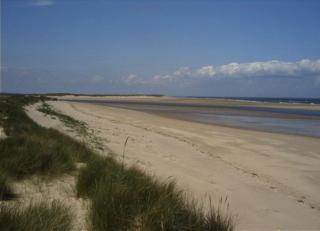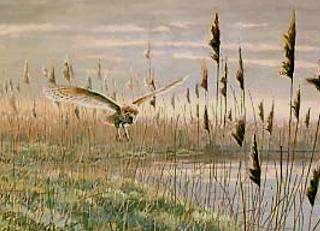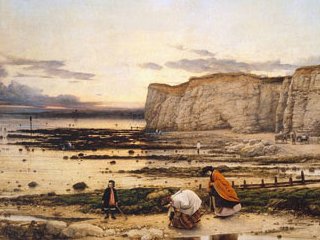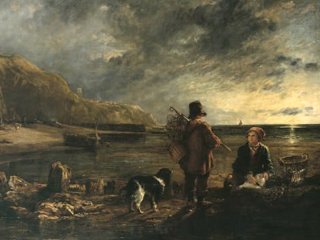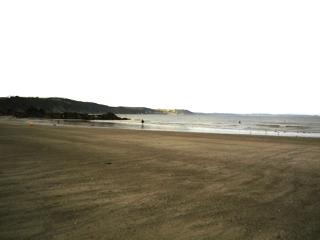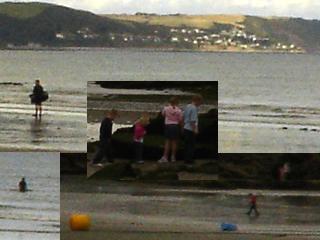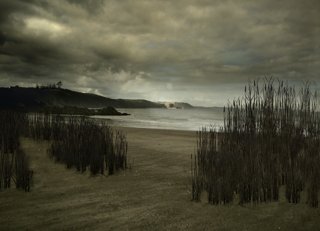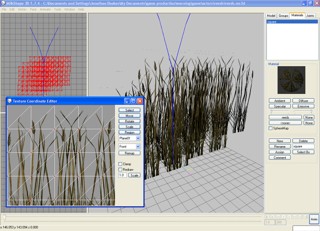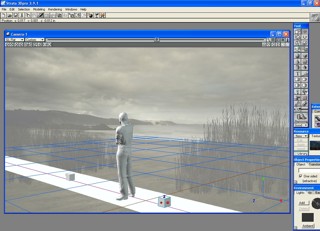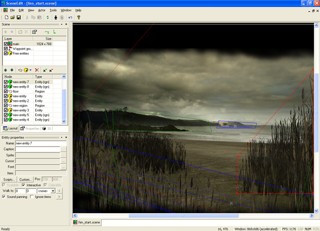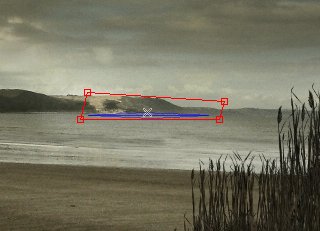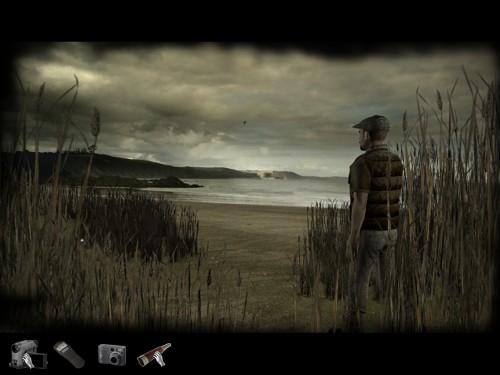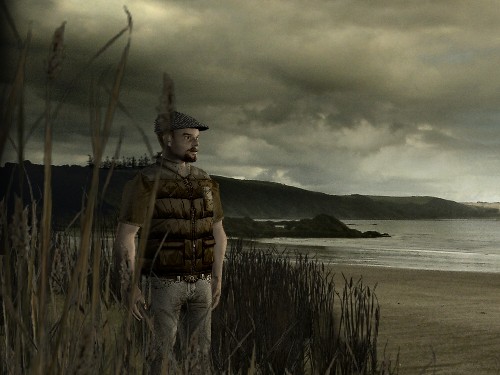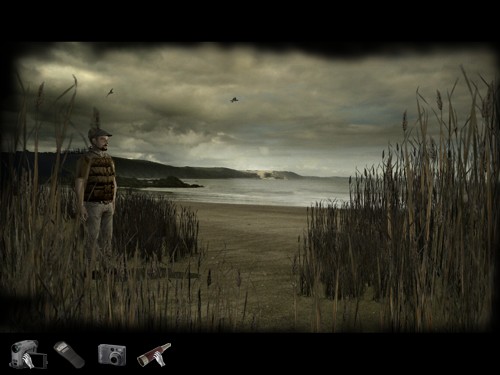Capturing
atmosphere: When drawing up plans for game locations, I find
myself (more often than not), drawn to the library, and my art books.
They are my main source of inspiration, and haven't failed me yet.
I had clear ideas of how I wanted my beach scenes to 'feel', but was
struggling to define the actual mechanics of the atmosphere. Should
it be stormy, clear or foggy? All weather conditions can be eerie,
if represented in the right way. One thing was very important, and
clear in my mind, and that was the light quality I wished to capture.
Thomas Hardy, in his poem 'The Darkling Thrush', described an evenings
gloom as "the weakening eye of day". It's a phrase which
has stuck in memory, and one which I'd like to explore in 'The Lost
Crown'. Opening up the Thames&Hudson's, I began to search for
paintings which captured the mood I was striving for:
Pegwell
Bay, Kent - a Recollection of October 5th 1858, painted by
William Dyce (1806-1864).
Painted from memory, this coastal scene is very evocative. The dying
day is reflected beautifully in the wet sands, and rocks pools of
the beach. The characters are also interesting, as they are both real,
and unreal. As we were not present during the excursion at Pegwell
Bay, you get the impression of ghosts reenacting a dayout. The timeless
quality of the surrounding coast helps cement the impression. I would
go as far as to say, that should you stand long enough on the sands,
and gaze towards the cliffs, you may see the daytrippers, searching
among the pebbles, and shells.
Early
Morning - Cromer - 1845, painted by William Collins
In 1815 Collins visited Norfolk and made sketches of the coastline
and local life, like many artists of the time. The actual painting
wasn't completed until 30 years after his visit, meaning he was working
from his sketches, and memories/impressions of the coastline. This
late example of his work was praised by the art critic John Ruskin
for "the truth of its atmospheric effect". Collin's has
captured the atmosphere rather than the actual location. I wouldn't
go as far as to say it is early impressionism, but the painting does
share many qualities of the Impressionistic art movement. 'Early Morning'
is the sum of its many parts, rather than a strict composition (something
I would also grow to appreciate further into the production process).
I especially like the sky, with its dark rain cloud threatening to
break the atmospheric tension. Beyond, we witness another 'dying
day', as the sun slips away. These last few moments of light exhibit
an ochre glow, which is both radiant, and gloomy.
The important thing to note about both these paintings, is that they
were painted from memory. You could say they are impressions of the
coast, and scenes witnessed by the artist. A photograph can never
capture someone's personal impression of a place, so some artistic
licence is allowed to help nudge what is photographic towards the
artistic.
